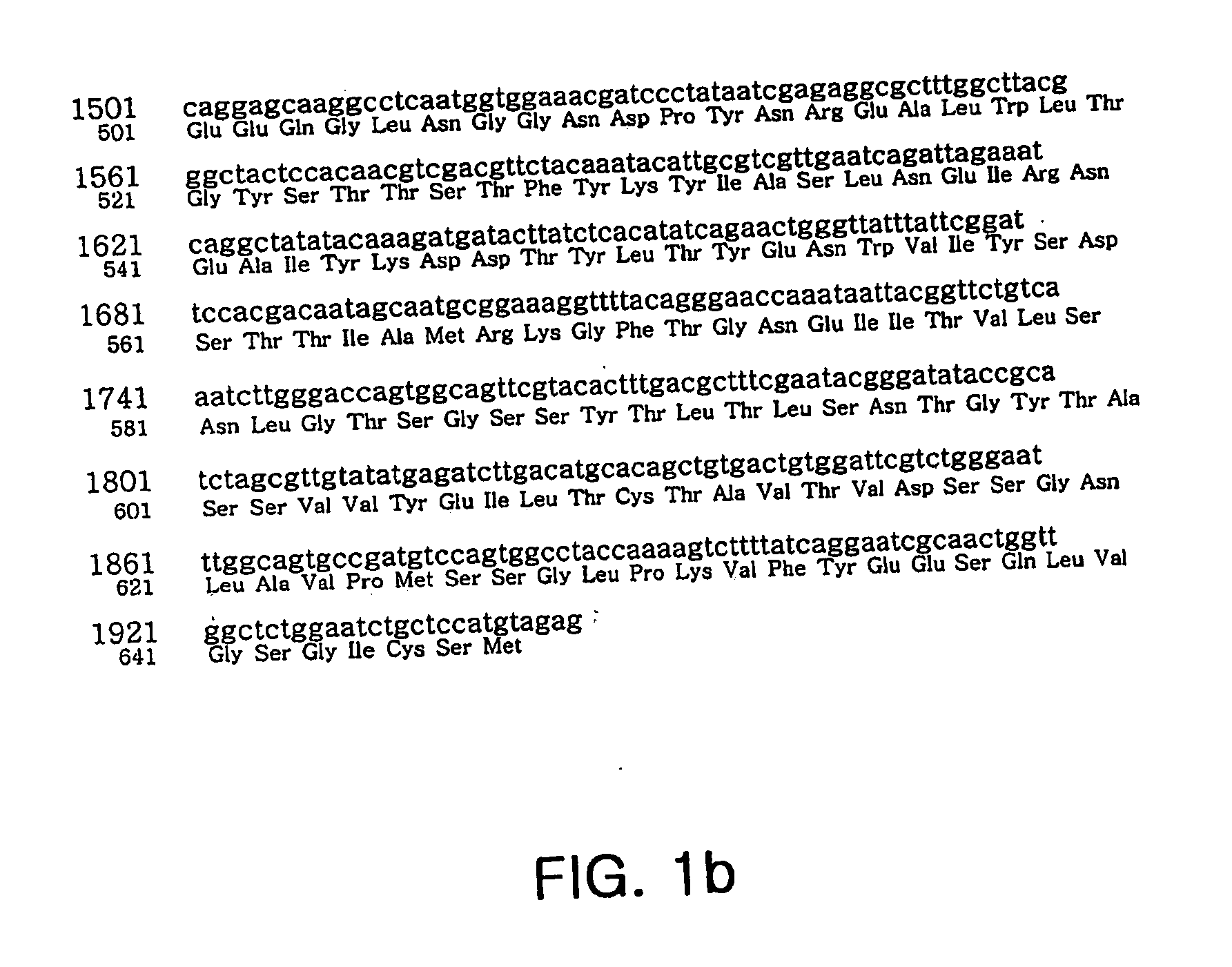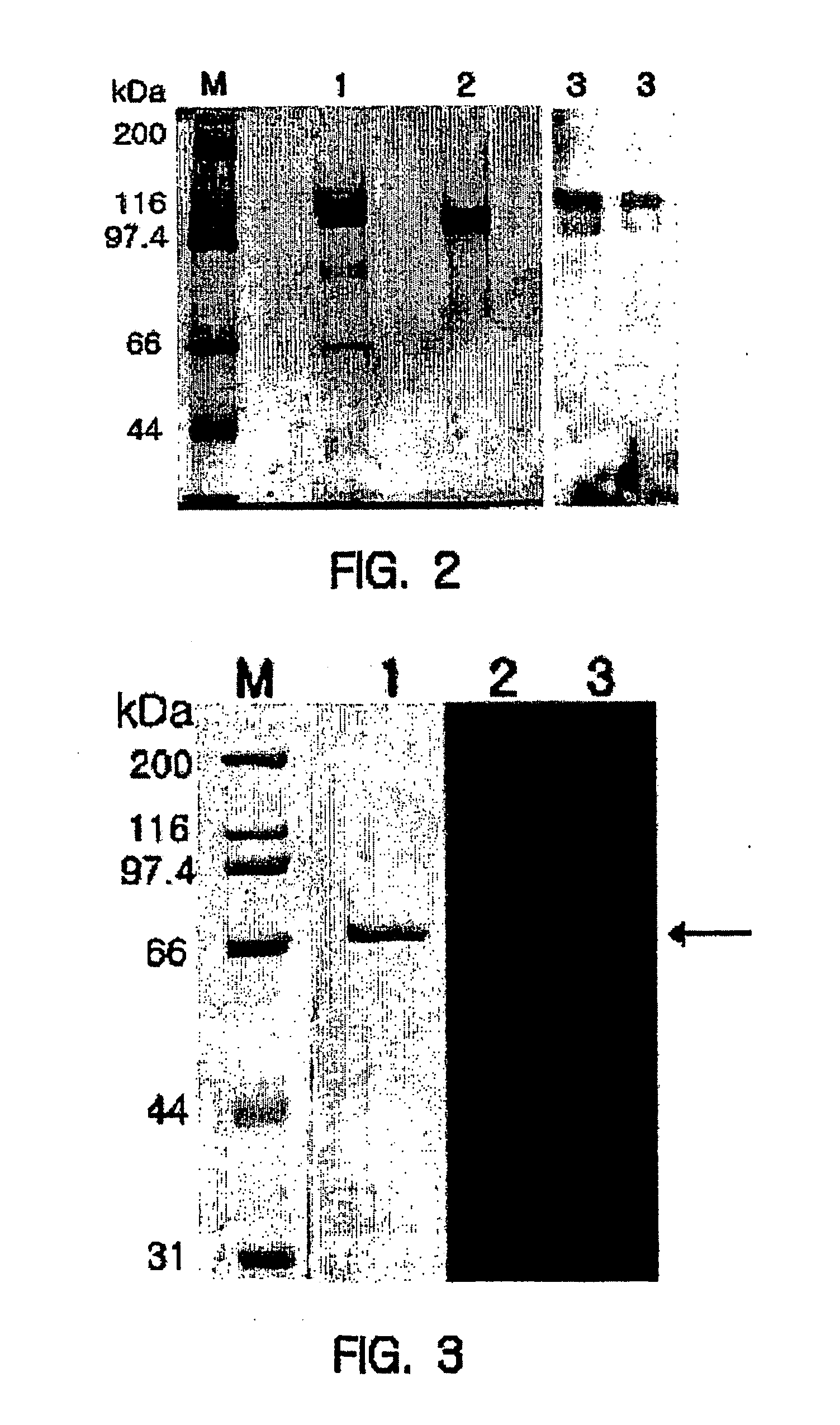Protein with activity of hydrolyzing amylopectin, starch, glycogen and amylose, gene encoding the same, cell expressing the same, and production method thereof
a technology of glycogen and amylose, which is applied in the field of proteins, can solve the problems of strong toxicity and air pollution, mottle formation, side effects,
- Summary
- Abstract
- Description
- Claims
- Application Information
AI Technical Summary
Benefits of technology
Problems solved by technology
Method used
Image
Examples
example 1
lsa gene cloning in Lipomyces starkeyi
[0035] 1) Strain and plasmid
[0036]Lipomyces starkeyi KFCC 11077, which produces DXAMase having dextranase and amylase activity, was used as a DNA donor for cDNA isolation and amylase gene selection. General DNA manipulation and DNA sequencing were carried out with Escherichia coli DH5α and pGEM-T easy (Promega, USA). For the construction of a cDNA library, E. coli XL1-Blue and SOLR (Stratagene, USA) were used as host cells with lambda phase Uni-ZAP XR (Stratagene, USA) as a vector.
[0037] 2) Culture condition
[0038]L. starkeyi was cultured in an LW medium supplemented with 1% (w / v) starch. The LW medium, containing 0.3% (w / v) yeast extract and 0.3 (w / v) KH2PO4, was adjusted to pH 4.5 with HC1. For bacterial culture, LB (1% trypton, 0.5% yeast extract, 1% NaCl, pH 7.3) and LBA (LB containing 50 g ampicillin / ml) were used.
[0039] 3) Purification of carbohydrolase
[0040] To obtain a preculture, L. starkeyi was grown in an LW medium supplemented w...
example 2
Assay for Carbohydrolase Activity
[0057] The reducing value of the carbohydrolase was determined by a DNS (3,5-dinitrosalicylic acid) method in combination with a copper-bicinchoninate method. That is, 100 μl of copper-bicinchoninate was added to 100 μl of an enzyme solution, and allowed to react at 80C. for 35 min, followed by being cooled for about 15 min. Absorbance was measured at 560 nm.
example 3
Assay for Optimal pH and Temperature and Stability of Enzyme
[0058] The enzyme LSA was assayed for optimal pH by measuring reaction rates in the range of pH 3-9 at intervals of pH 1.0. For this purpose, 2OmM citrate phosphate buffer (pH 4.0), citrate / phosphate buffer (pH 5-6) and sodium phosphate buffer (pH 7-9) were used. After reaction at 37° C. for 48. hours, the carbohydrolase activity of the enzyme was determined by a DNS method. Also, the pH stability of the enzyme was measured after the enzyme was added to each buffer and allowed to stand for 3 hours at 22° C.
[0059] The optimal temperature of the enzyme was determined by measuring the reaction rates of the enzyme which had been allowed to stand for 30 min at various temperatures (20-80° C., 10C. interval). For the determination of temperature stability, the enzyme was measured for residual activity after being allowed to stand for 30 min at various temperatures (20-90° C., 10° C. interval). 1% (w / v) starch was used as a subs...
PUM
| Property | Measurement | Unit |
|---|---|---|
| pH | aaaaa | aaaaa |
| concentration | aaaaa | aaaaa |
| pH | aaaaa | aaaaa |
Abstract
Description
Claims
Application Information
 Login to View More
Login to View More - R&D
- Intellectual Property
- Life Sciences
- Materials
- Tech Scout
- Unparalleled Data Quality
- Higher Quality Content
- 60% Fewer Hallucinations
Browse by: Latest US Patents, China's latest patents, Technical Efficacy Thesaurus, Application Domain, Technology Topic, Popular Technical Reports.
© 2025 PatSnap. All rights reserved.Legal|Privacy policy|Modern Slavery Act Transparency Statement|Sitemap|About US| Contact US: help@patsnap.com



